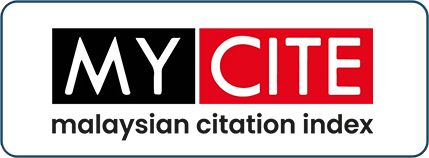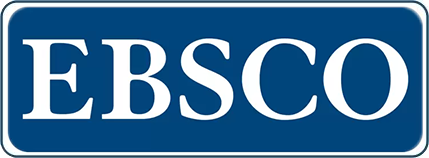Halal Cosmetics Awareness Among Muslim Youths In Sarawak
DOI:
https://doi.org/10.33102/jfatwa.vol27no2-SE.494Keywords:
Awareness, Cosmetic, Halal, Muslim and YouthsAbstract
Halal products are getting high demanding along with the emerging world e-commerce business not only within the Organisation of Islamic Cooperation (OIC) country but also the non-OIC country. Halal Development Corporation (HDC) estimated that Halal pharmaceutical will generate RM1.6 billion to Malaysia in 2025. Malaysia was among the top five countries produced halal cosmetics products which was influenced by the ecosystem of Malaysia that flourished with flora and herbal plantation. Youths were synonym to look beautiful and eager to try multi cosmetic products with various techniques to make-up as uploading in social media. This boosted demand for the cosmetic products to be sold in different outlets. Thus, this study is carried out to help with understanding of Muslim Sarawak youths’ awareness towards halal cosmetic products such as lipsticks, mascara, foundation and facial wash. Data is gathered using questionnaires distributed to 175 respondents randomly through snowball sampling. Descriptive analysis is conducted to know the youths’ awareness level and their knowledge in choosing and purchasing cosmetics products in Sarawak. As a conclusion, producing quality halal cosmetics products and awareness campaigns on halal cosmetics products is vital to cater the halal cosmetics demand in the world.
Downloads
References
Adiba (2019) Consumer purchasing behavior of halal cosmetics: A Study on Generations X and Y. Journal of Islamic Monetary Economics and Finance, Vol.5, No.1 (2019), pp.169-192.
Abd Aziz, A. (2021) Why Choose Halal Cosmetic Products?. Revon Media Sdn. Bhd., Shah Alam, Selangor.
Bahman H., Manizheh G., Mohammad, Reza H, & Fereshteh M. (2015). Raising Halal Cosmetic Awareness among the respective Consumers, International Journal of Academic Research in Business and Social Sciences, 5(7), 338-349.
Creswell, J. W. (2008) Research design: Qualitative, Quantitative, and Mixed Methods Approaches. SAGE Publications, Incorporated.
Ernawati (2019) The Global Competitiveness Study of Halal Pharmaceuticals and Cosmetics Industry. Mega Aktiva: Jurnal ekonomi dan Manajemen. Vol 8. (No.1).
Esfahani, A. N., & Shahnazari, A. (2013) Designing Halal and Pure Food Model by Emphasizing Consumer Behavior Management. J. Basic. Appl. Sci. Res, 3(2), 574 –578.
Haque, A., Chowdhury, N., Tarofder, A. K., Ahmad, N. & Sharif, S. (2018). Muslim consumers’ purchase behavior towards halal cosmetic products in Malaysia. Management Science Letters. 8. 1305-1318. 10.5267/j.msl.2018.9.009.
Infographic Labour Sarawak 2020 (Sarawak Labour Outlook 2020 Jan-Dec), https://www.jtkswk.gov.my/images/BM/penerbitan/data_statistik/Statis tik_Perburuhan_2020_Jan_-_Dis.pdf
Ishak, S., Che Omar, A.R., Khalid, K., Ab. Ghafar, I.S. and Hussain, M.Y.(2020) Cosmetics purchase behavior of educated millennial Muslim females, Journal of Islamic Marketing, Vol. 11 No. 5, pp. 1055-1071. https://doi.org/10.1108/JIMA-01-2019-0014
Ismail, I., Nik Abdullah, N. A., Ahmad, Z., & Sidek, N. L. (2018) Halal principles and halal purchase intention among Muslim consumers. In Proceedings of the 3rd International Halal Conference (INHAC 2016) (pp. 131-138). Springer, Singapore.
Jihan, A., Hashim, M., & Musa, R. (2014) Factors Influencing Attitude Towards Halal Cosmetic Among Young Adult Urban Muslim Women : A Focus Group Analysis. Procedia - Social and Behavioral Sciences, 130, 129–134.
Kamaruzaman, K. A. (2008) Halal Cosmetics: Between Real Concerns and Plain Ignorance. Halal Journal.
Krejcie, R. V., & Morgan, D. W. (1970) Determining sample size for research. Educational and Psychological Measurements, 30, 607-610.
Mohezar,S., Suhaiza, Zailani Zainorfarah, Zainuddin (2017) Halal Cosmetics Adoption Among Young Muslim Consumers in Malaysia: Religiosity Concern. GJAT, 6(1), 47- 59.
Moidunny (2009) in Raamani Thannimalai & Arumugam Raman (2018). The Influence of Principals’ Technology Leadership and Professional Development on Teachers’ Technology Integration in Secondary Schools. Malaysian Journal of Learning and Instruction: Vol. 15 (No.1) June 2018: 203-228
Mohd Majid Konting (2000) Kaedah Penyelidikan Pendidikan .Kuala Lumpur : Dewan Bahasa dan Pustaka.
Patton, D. (2009) Why halal label is critical for major exporters, Business Daily, available at: www.bdafrica.com/index.php?option=com_content&task=view&id=221
Raamani Thannimalai & Arumugam Raman (2018). The influence of principals’ technology leadership and professional development on teachers’ technology integration in secondary schools. Malaysian Journal of Learning and Instruction. Vol 15 (No.1). 203-228.
Sahari (2022) HDC expects Halal exports to surpass RM42 bln pre-pandemic level. Bernama.com. Available at: https://www.bernama.com/en/business/news.php?id=2085500.
Swidi, A, Wie, C, Hassan MG, Al-Hosam, A.&Mohd Kassim, AW (2010) The mainstream cosmetics industry in Malaysia and the emergence, growth, and prospects of Halal cosmetics. The Third International Conference on International Studies (ICIS 2010), Sintok: Universiti Utara Malaysia.
Thomson Reuters. (2017) State of Global Islamic Economy Report 2016-2017. Thomson Reuters, In Collaboration with Dinar standard.
Varghese, S. & Agrawal, M. (2021) Impact of Social Media on Consumer Buying Behavior. Saudi J Bus Manag Stud, 6(3): 51-55.
Downloads
Published
Issue
Section
License
Copyright (c) 2022 Sharifah Anom Omar, Nazirah Hamdan, Noormuthaah Mohamad Ali Adaha, Julia Madzalan

This work is licensed under a Creative Commons Attribution 4.0 International License.
The copyright of this article will be vested to author(s) and granted the journal right of first publication with the work simultaneously licensed under the Creative Commons Attribution 4.0 International (CC BY 4.0) license, unless otherwise stated.















